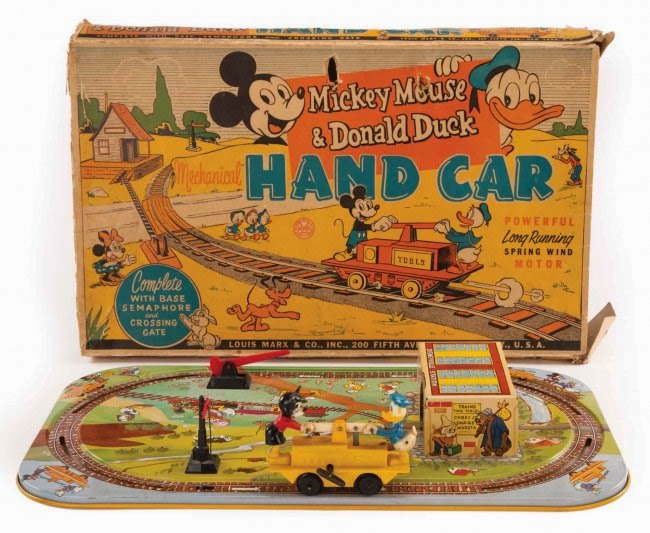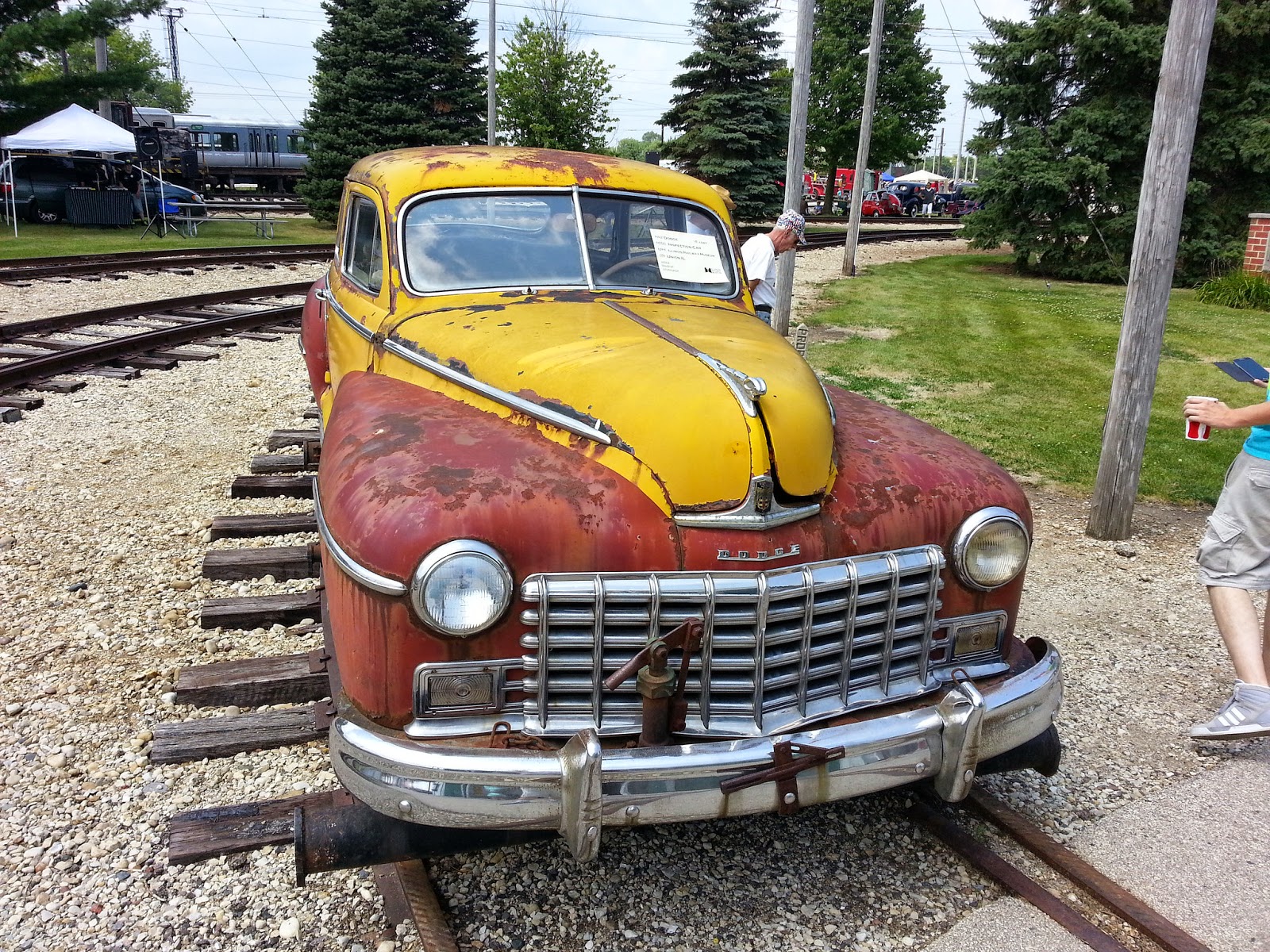Riding the Rails in a '47 Dodge
"I've been working on the railroad
All the live-long day.
I've been working on the railroad
Just to pass the time away."
- Milwaukee Road inspection car #30, a 1947 Dodge D24C Custom 7-passenger sedan. This car is now in the collection of the Illinois Railway Museum, and we'll showcase this rare machine a little bit later on.
- Cartoons may have skewed our impression of the railroad worker and his tools. Saturday mornings used to be filled with wild-eyed coyotes and desolate western settings involving heavy equipment and tomfoolery. Cue the banjos and load the images of hillbilly characters on the old handcar, pumping along the tracks as a means of escape from a technicolor villain. They also functioned as cheap transportation for mice and ducks.
- Besides their use as a comedic prop, handcars served a true purpose. Railroad maintenance crews would use them to inspect and repair the miles of track laid down for the iron horse. Hundreds of patents were given to inventors during the late 1800's for new advancements in the design and construction of handcars, but they still relied on human or steam power and really weren't fun to be on for an 8 to 12 hour stretch. With the advancement of the motor vehicle in the early 20th century, the motivation for the inspection cars moved from manpower to horsepower (horses fed with gasoline not oats). Model T's were fitted with custom steel railroad wheels and sent down the track to work all the live-long day.
- Railroad inspection cars gradually evolved, as did the production automobiles they were based upon. A good example of this is the Illinois Railway Museum's newly acquired 1947 Dodge D24C Custom 7-passenger sedan, originally purchased and modified for use by the Milwaukee Road. We got a chance to see this car up close in the summer of 2014 and it was fascinating to see the little details that made this car special. Its currently awaiting a full restoration, but is in fairly solid shape for a car that sat outside most of its life. Let's take a closer look at this railroad relic.
- According to the excellent blog Hick's Car Works, this Dodge was delivered to the Chicago, Milwaukee, St. Paul & Pacific Railroad and custom-built by their shop for use by company officials. Car #30 was one of 3,700 Dodge D24C Custom 7-passenger sedans built that year, and featured a good deal of interior room with air foam seat cushions and Dodge's "full floating ride". It would have been a wise choice for the burly railroad crew. A big American sedan with a nice ride and creature comforts was a far cry from the days of the two-man handcar.
- For switching purposes the Dodge was fitted with a hydraulic jack on the front, while crash bars underneath were added as a precaution in case the car jumped the track or found itself in a situation that could damage its undercarriage. The bars straddle the frame and extend past the rocker panels in the rear and are visible below.

- Since cars can't steer on the rails, the Dodge's steering linkage was removed and the production tires were shelved and replaced with a special railroad rim and rubber tire for extra dampening , similar to some of the interurbans of the late 40's and early 50's.
- Powered by a 230 cubic inch L-head engine developing 102 horsepower, and a 3-speed manual transmission, this 1947 Dodge also utilized Chrysler Corporation's trademark "Fluid Drive", or a fluid coupling between the engine and transmission allowing for smooth take-off from a dead stop and other unique driving features.

- After working on the railroad from 1947 to 1961, Milwaukee car #30 moved to the Mid-Continent Railway Museum in North Freedom, Wisconsin where it sat for many years until it was purchased by the IRM in May of 2014. It won't win any beauty pageants right now, but it appears to be a straightforward and easily accomplished restoration in the capable hands of the folks at IRM. The group's plans are to fully restore the Dodge in the coming years and the group is always in need of financial support. If you'd like to contribute to car #30's restoration or learn more about volunteer opportunities, click here for details.
- Stop by next week for more rusty stuff.
- -D
 |
| 1950's Disney game featuring a handcar. Photo: LiveAuctioneers.com |
 |
| The Hooterville Flivverball, a Ford Model T railroad inspection car from a 1964 episode of the TV series Petticoat Junction. Photo: imcdb.org |







Comments
Post a Comment
Thank you for your feedback on Throwin' Wrenches.